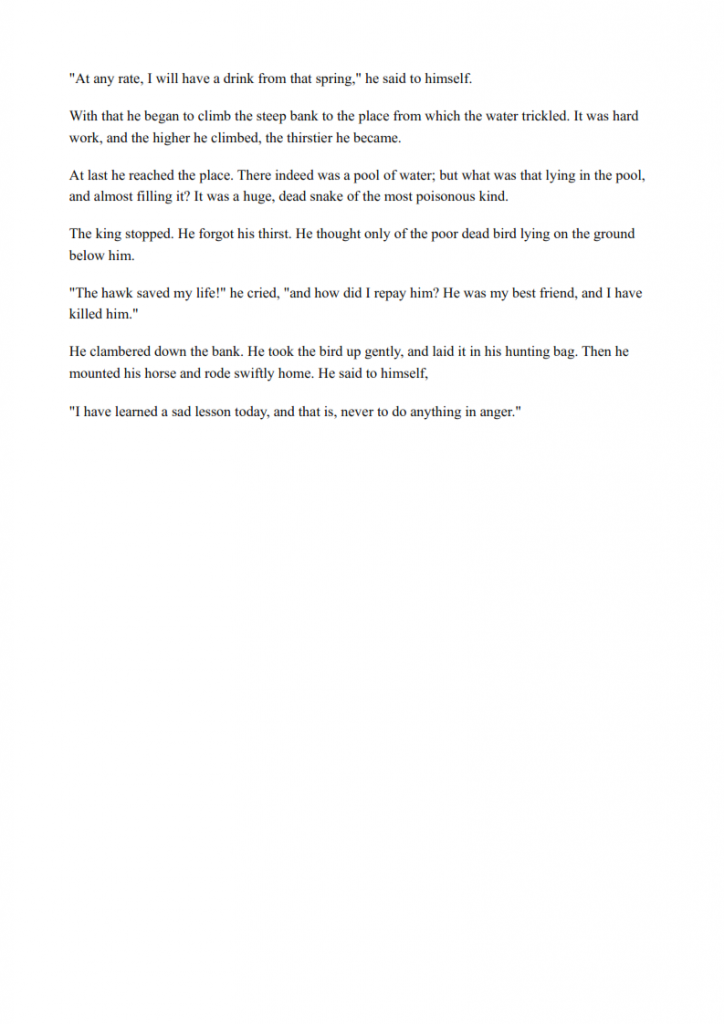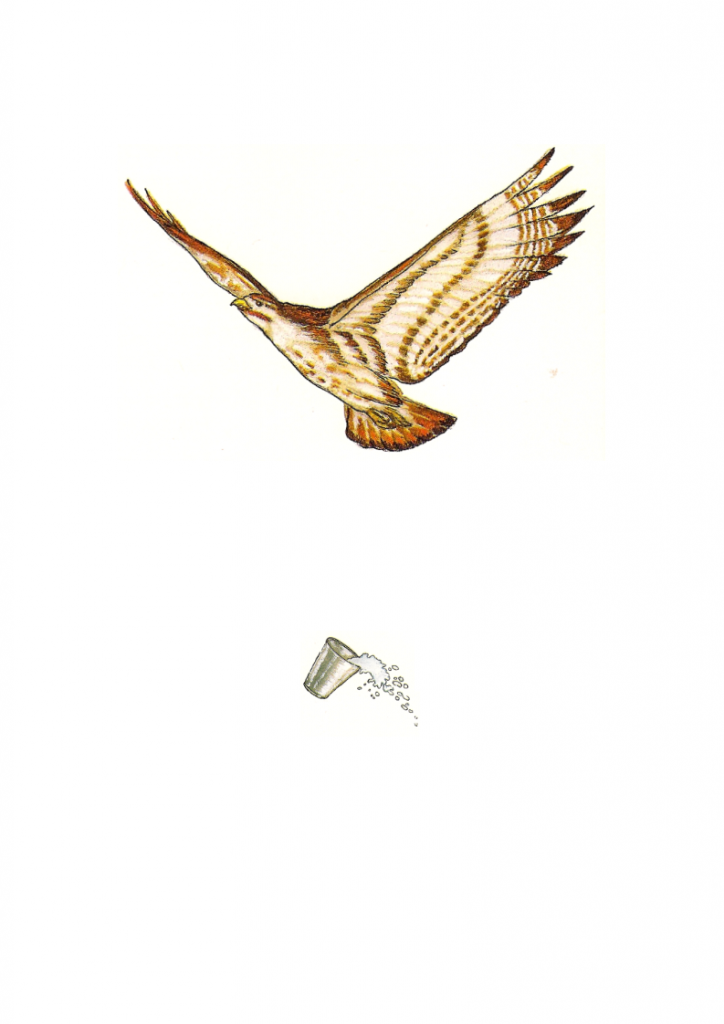Aim to think about the consequences of our actions
Aim
* to learn to think first before we act and not just follow our feelings
* to think about the consequences of our actions
Materials
* Picture cards of angry cartoon characters
* Story – “The King and His Hawk”
* worksheets
* Visual aids
* large pictures of the story
* traffic lights with the words, feel, think, do
* key word – consequence
Lesson Outline
1. Talk about feeling, thinking and doing
2. Talk about anger
3. Read “The King and His Hawk”
4. Discussion
5. Activities – worksheet, picture, memory
6. Conclusion
7. End with a Prayer
1) Talk about feeling, thinking and doing
* Review last week’s story to emphasize the importance of thinking first before you act.
* Think First! – The story is about a boy called Göran. One day he was throwing mud at his wooden fence in the garden, for shooting practice. His mother heard the sound of the mud and the mess it was making on the fence. She called him in to ask what he was doing. She explained that he must think first before he does something. The fence will have to cleaned and might have to be repainted, which will give a lot of extra work for his parents and cost money to buy paint. He used the clay in a way that could damage the fence. We must use things in the correct way. She points out that the fence also belongs to the family.
He must learn to respect people and their property. From this Göran learns a lesson about thinking first and respecting other people’s property
* Use the traffics lights to analyze the boy’s mistake. The correct order of the lights is to stop and wait (red), get ready to go (yellow) and go (green). In the same way, when we have an impulse (strong feeling) to do something, it is wise to stop first and think a little before we act. In the story Göran acted upon his impulse (feelings) and acted immediately. His mistake was to miss out the thinking part. He didn’t think about the consequences.
STOP – FEEL
GET READY – THINK
GO – DO
2) Talk about Anger
* One feeling in particular we should learn to control and think about before we act, is anger. If we act without thinking there can be bad consequences, which we will regret. Ask the children what makes them angry. What do they do when they get angry?
Look at the cartoon pictures
1. Tearing up a piece of paper.
2. Calling names
3. Arguing about a game
4. Stamping on someone’s toy
5. Kicking someone
6. Fighting after playing a game
7. Shouting at a parent
8. Shouting in someone’s ear
9. Smashing a baseball bat
Ask three questions
1. What is the cause of the anger in each picture
2. What is the consequence of acting upon those angry feelings
3. Think about what they could do instead, before they acted
EXAMPLE: SMASHING A BASEBALL BAT
Cause of anger
– he couldn’t hit the ball and got frustrated
– he lost the game
– his friend threw the ball too hard
Consequence
he can’t play the game anymore, because there is no bat,
he has to pay for a new bat,
he loses a friend,
his parents are upset
he feels regret
Think before you act
think about the consequences before you do anything
think about how the other person would feel,
think that it is only a game and not worth getting upset about,
think why you can’t hit the ball and ask for help,
think what would your parents do
think what God would do
One way to control anger is to count to ten before you do anything, and if very angry, count to a hundred.
3) Read “The King and His Hawk”
The great king, Genghis Khan, was hunting in the forest. He always took his hawk with him to help catch animals. On his way home he was very thirsty. It was a hot summer’s day and hard to find water. Finally, he saw some water trickling down a rock. He took his cup. When it was full and put it to his lips, his hawk knocked it from his hands and the water spilled on the ground. A second time he tried, but again the hawk knocked it away. The king began to grow angry and tried a third time, but again the hawk knocked it from him. At the fourth attempt, the king was so angry, he killed the hawk with his sword. The cup had fallen between two rocks, which he couldn’t reach. He decided to climb up to where the water came from. To his surprise, he found a dead and poisonous snake in a pool of water. If he had drunk the water he would have died. Now he understood why the hawk had stopped him drinking. The bird had saved his life. The king learned a sad lesson that day: Never do anything in anger.
4) Discussion
* What was the cause of the king’s anger?
* How many times did the hawk knock the cup from the king’s hands?
* What was the consequence of the king’s anger?
* What did the king find?
* What would have been the consequence of drinking the water?
* What did the king learn that day?
* What could he have done instead?
5) Activities
* Draw your own picture of the story
* memory game to reinforce the lesson.
6) Conclusion
Ask each child what they could learn from today’s lesson. Refer to the lesson aims:
* to learn to think first before we act and not just follow our feelings
* to think about the consequences of our actions
7) End with a Prayer









